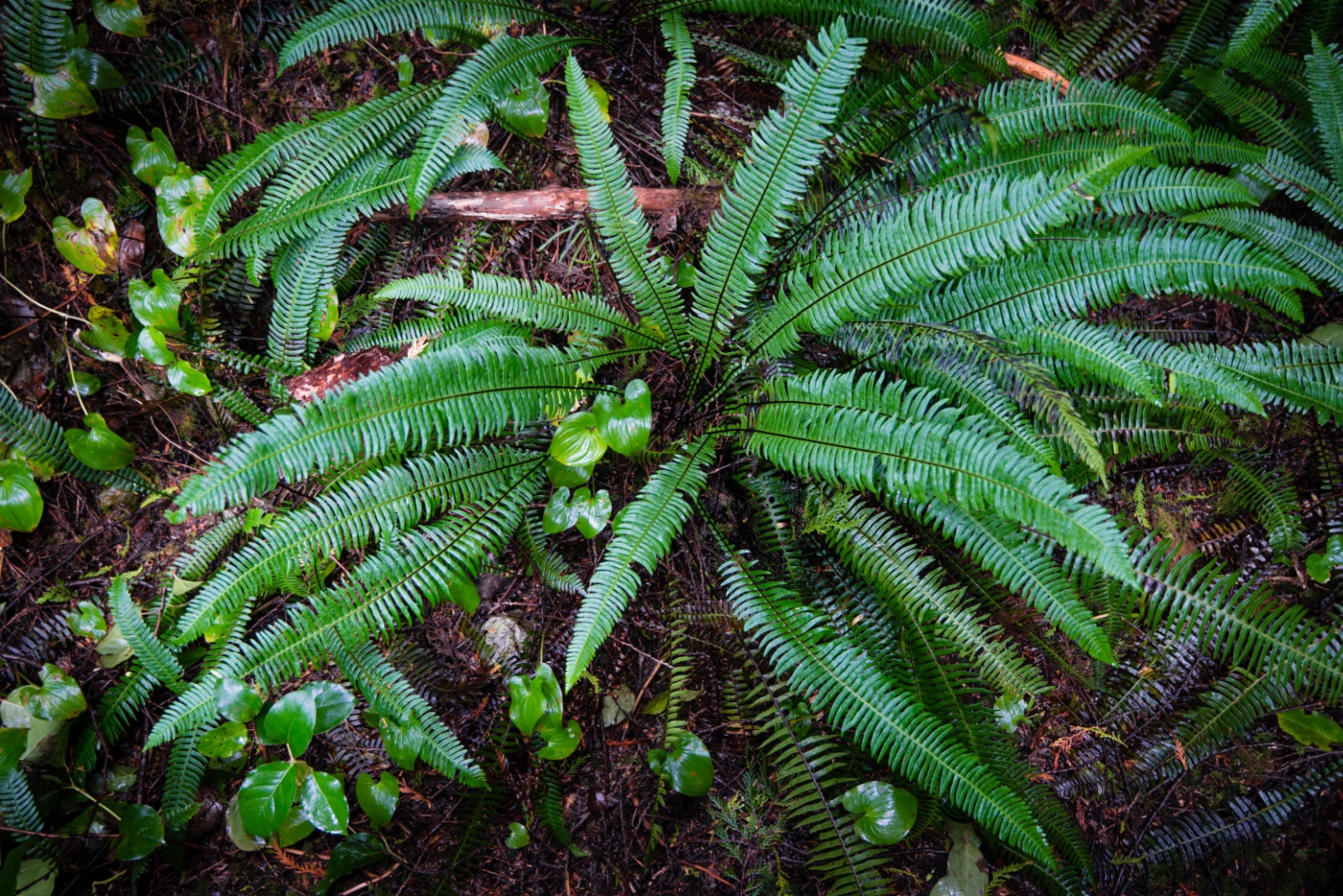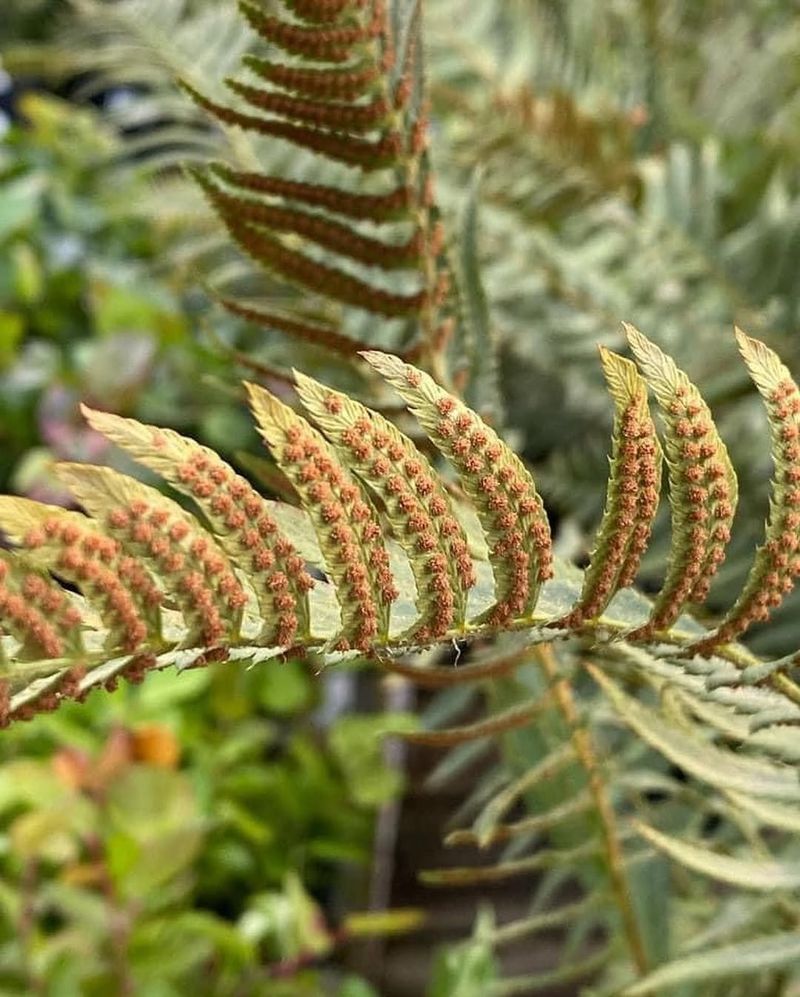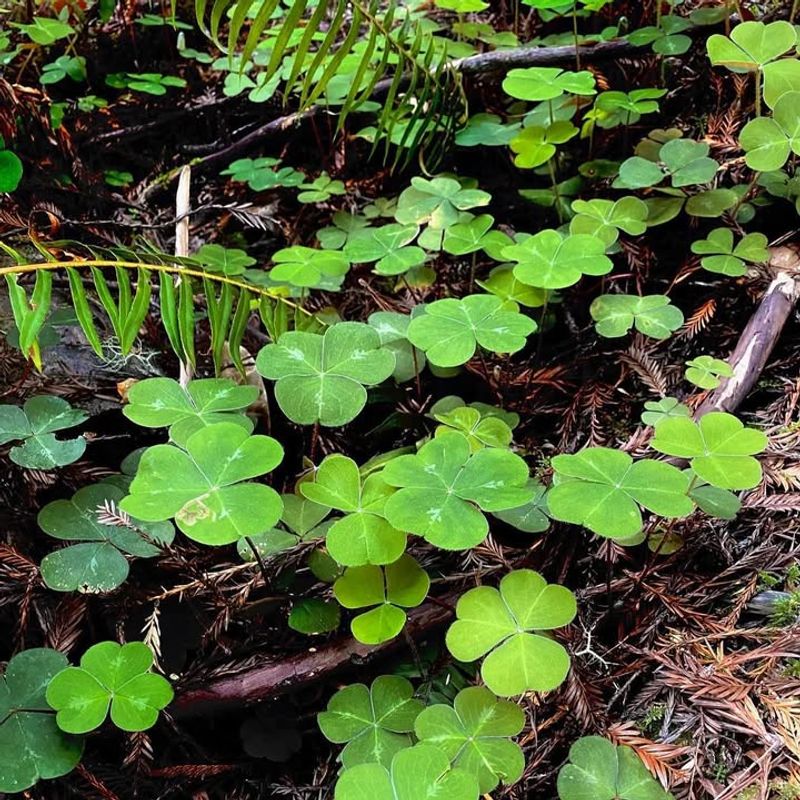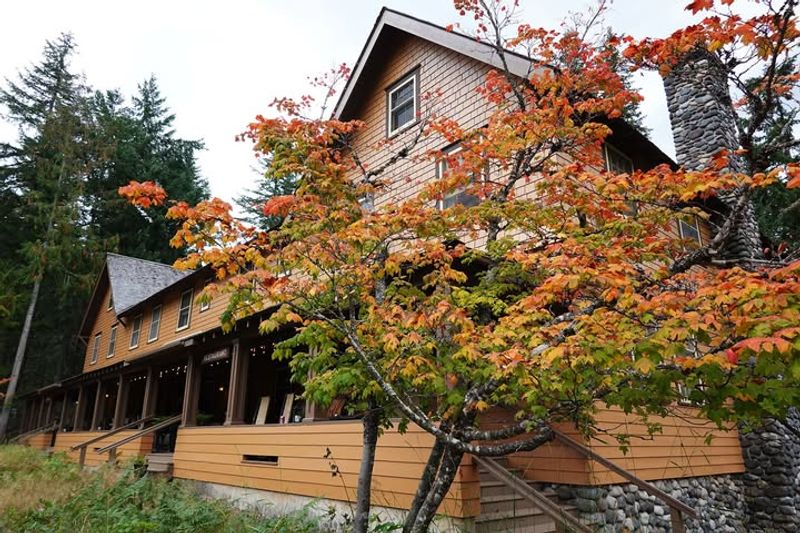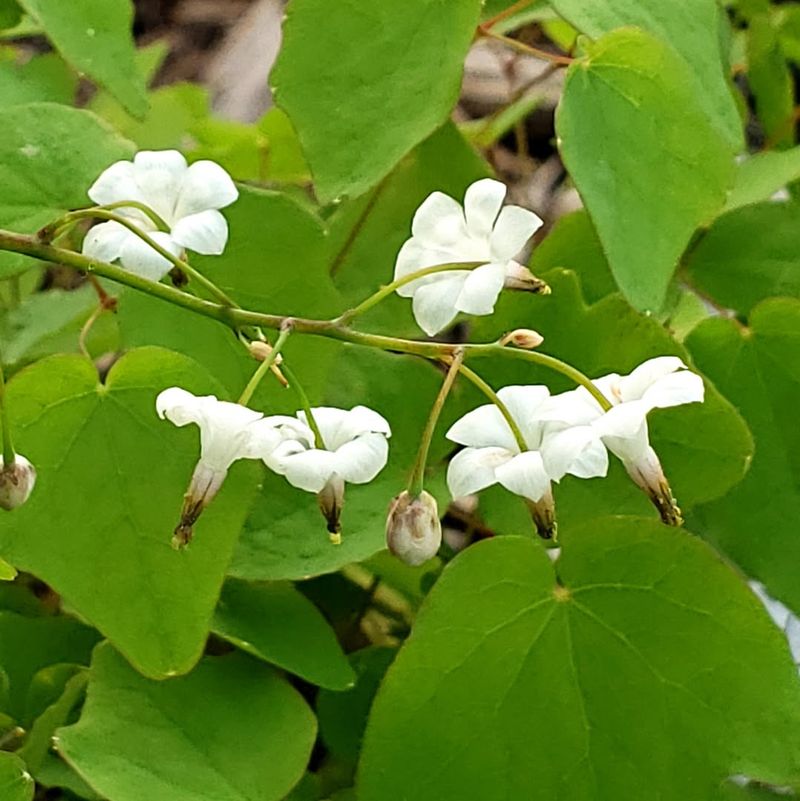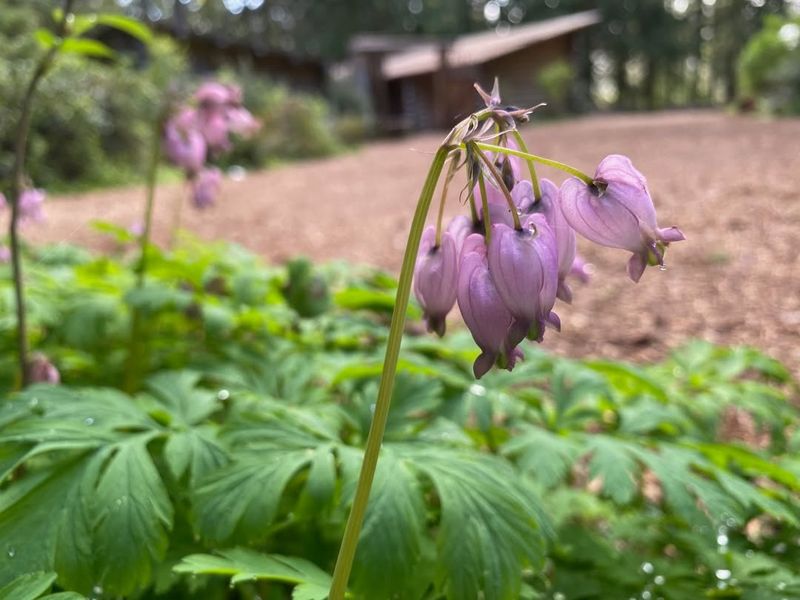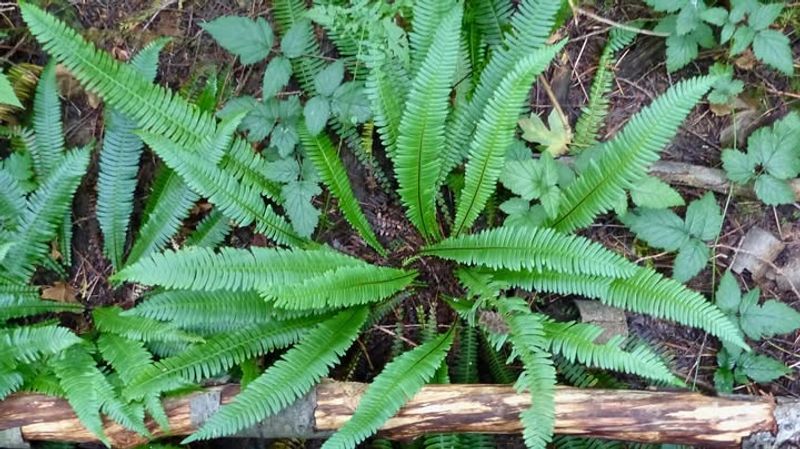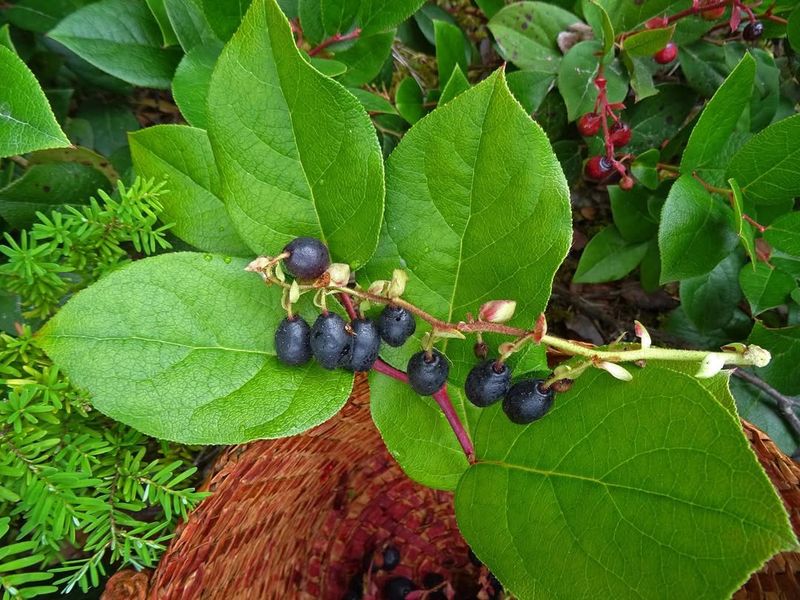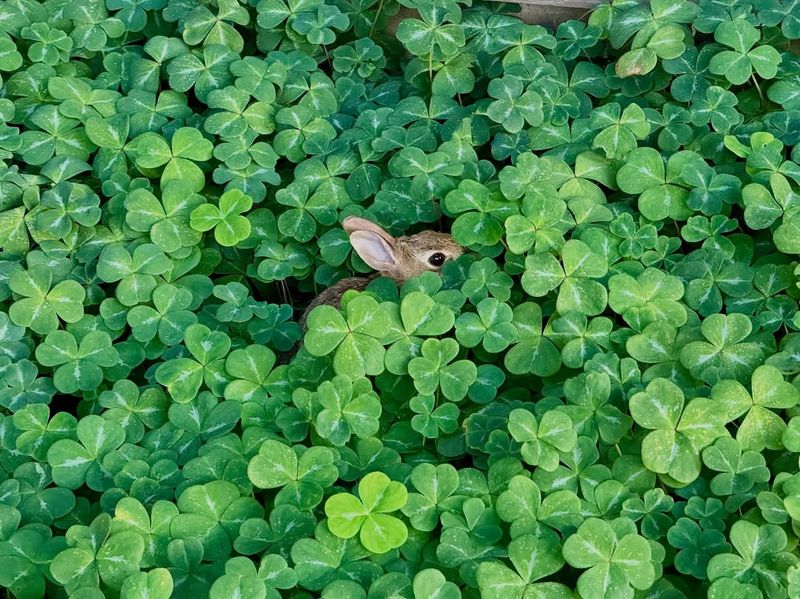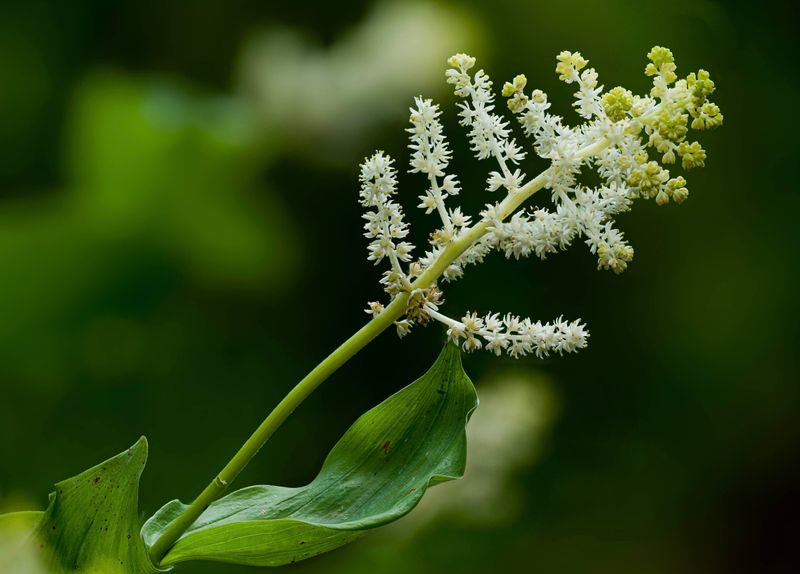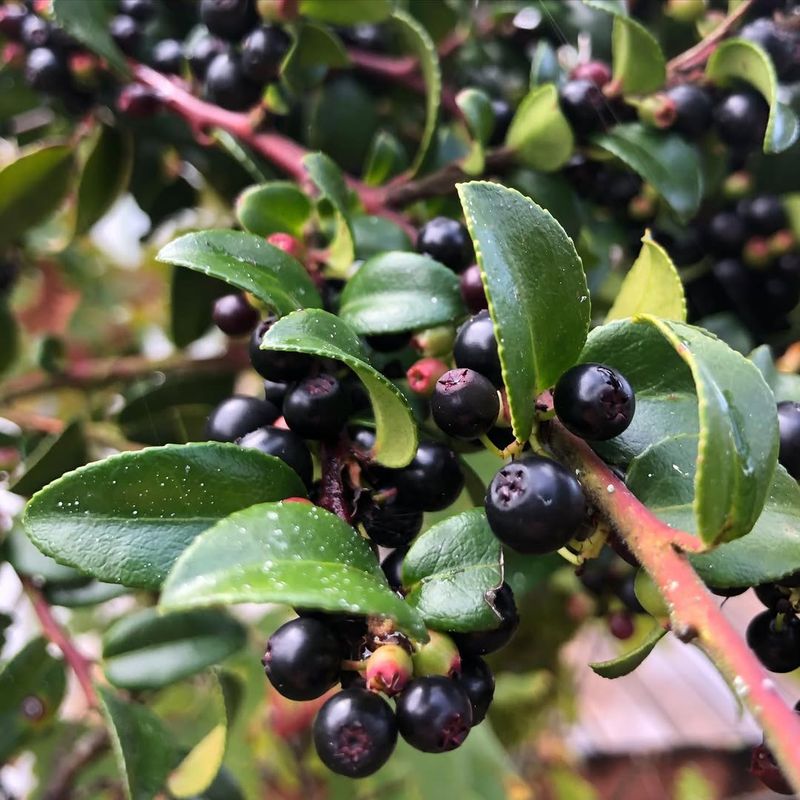Gardening in Oregon often means working with shady spots created by our magnificent evergreen canopies and cloudy skies. Many gardeners struggle to find plants that thrive where sunlight rarely reaches.
Fortunately, our region’s natural woodlands offer inspiration for beautiful shade gardens filled with plants perfectly adapted to these conditions.
1. Western Sword Fern (Polystichum munitum)
Growing naturally along forest floors across Oregon, this hardy fern adds texture and evergreen structure to the darkest corners. I’ve planted several beneath towering Douglas firs in my backyard where nothing else would grow.
Their leathery fronds remain green year-round and require almost no maintenance once established. Simply clear away dead fronds in late winter and provide occasional water during summer’s driest spells.
These native beauties can spread slowly over time, creating natural-looking drifts that prevent erosion on sloped areas.
2. Oregon Oxalis (Oxalis oregana)
This charming groundcover spreads gently through shady areas with its clover-like leaves that fold downward when direct sunlight hits them. In my Portland garden, patches of oxalis create living carpets beneath rhododendrons.
Small white or pink flowers appear in spring, adding delicate interest to woodland gardens. The plant goes dormant during extreme drought but bounces back quickly when moisture returns.
For best results, plant in groups of three or more in humus-rich soil where they’ll gradually form a continuous mat.
3. Vine Maple (Acer circinatum)
Unlike its sun-loving maple cousins, this native understory tree thrives in filtered light beneath taller forest trees. The multi-stemmed growth habit creates an artistic silhouette even in winter.
Fall brings spectacular color transformation from green to fiery orange and red. I’ve found vine maples particularly useful for creating middle-story interest in woodland gardens that lack vertical diversity.
They grow slowly, reaching 15-20 feet at maturity, making them perfect for smaller properties or beneath power lines where larger trees aren’t practical.
4. Inside-Out Flower (Vancouveria hexandra)
This elegant native perennial earned its unusual name from flowers that appear to be worn inside-out. Delicate white blooms hover above lacy, blue-green foliage from late spring through early summer.
After struggling with erosion on a shaded slope, I introduced inside-out flower groundcover that quickly established itself. Its rhizomatous growth pattern helps stabilize soil while outcompeting most weeds.
Plant in rich, acidic soil with good drainage and apply a thin layer of leaf mulch annually to mimic its natural forest floor habitat.
5. Pacific Bleeding Heart (Dicentra formosa)
Heart-shaped pink flowers dangle from arching stems above fern-like foliage in spring, creating woodland magic in the shadiest corners. The native form spreads more enthusiastically than cultivated varieties.
My woodland garden patch began with three small plants that now form a substantial colony. They naturally go dormant during summer drought—don’t worry when foliage yellows and disappears by August.
Pair with later-emerging plants like hostas that fill the visual gap when bleeding hearts retreat underground during the hottest months.
6. Deer Fern (Blechnum spicant)
Distinctive dimorphic fronds make deer fern instantly recognizable—fertile fronds stand upright while sterile fronds spread horizontally. This architectural quality adds visual interest even without flowers.
During establishment in my Eugene garden, these ferns required regular watering, but now survive our dry summers with minimal intervention. Their evergreen nature provides structure during winter when deciduous plants disappear.
Plant them in groups of odd numbers (three, five, or seven) for the most natural-looking arrangement, spacing plants about 18 inches apart.
7. Salal (Gaultheria shallon)
Leathery, glossy leaves make salal an excellent year-round presence in deep shade gardens. This native shrub produces white bell-shaped flowers followed by edible dark blue berries that attract birds.
When renovating a neglected corner of my property, salal proved invaluable for filling difficult spots beneath mature conifers. Once established, it requires almost no maintenance except occasional thinning if it spreads too enthusiastically.
For a more formal look, prune after flowering to maintain a denser habit and control height, which typically ranges from 2-5 feet.
8. Redwood Sorrel (Oxalis oregana ‘Redwood’)
A stunning variant of Oregon oxalis with deep burgundy-purple foliage that creates dramatic color contrast in woodland settings. The leaves respond to light intensity by folding downward during brightest hours.
Last spring, I tucked several small divisions between larger ferns where they’ve formed a beautiful understory. Their color intensifies in cooler weather, providing garden interest from fall through spring.
Combine with lime-green plants like maidenhair fern for a striking color combination that brightens even the darkest garden corners.
9. False Solomon’s Seal (Maianthemum racemosum)
Graceful arching stems carry clusters of tiny white flowers at their tips in late spring, followed by speckled red berries that slowly turn ruby-red. The plant creates a woodland fountain effect in dappled shade.
After years of gardening in Oregon, I’ve found this native perennial particularly adaptable to various soil conditions. It spreads slowly through rhizomes to form loose colonies but never becomes invasive.
For best visual impact, plant in groups where their 2-3 foot height creates a middle layer between groundcovers and taller shrubs or trees.
10. Evergreen Huckleberry (Vaccinium ovatum)
Small, dark green leaves with bronzy new growth make this native shrub attractive year-round in woodland gardens. Tiny pink bell-shaped flowers produce delicious dark berries by late summer—if you can harvest them before birds do!
The slow growth rate makes evergreen huckleberry perfect for gardens where space is limited. In my coastal Oregon garden, these shrubs maintain compact form with minimal pruning needed.
Plant in acidic soil amended with organic matter, and mulch with conifer needles or bark to maintain soil pH and conserve moisture during establishment.

